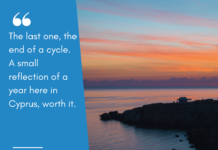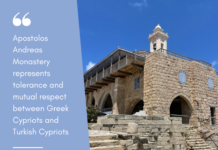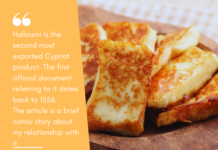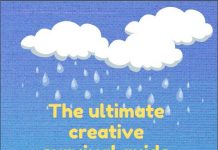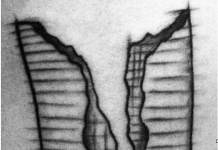Although the public perception appears to have changed, there exists a negative mentality towards the widerange of urban visual expressions such as murals, graffiti, tagging, street art and even urban defacement. These diverse aesthetic forms of expression straddle the line between contemporary art and act of vandalism and the boundary is actually subtle. Despite the increasing acceptance of graffiti and street art, the longstanding public debate focuses on two clashing different fundamental rights: the freedom of expression and the right of private and public property. Some analyze it from the standpoint of street art as an illegal act that undermines the right to own property (if pieces aren’t commissioned), some as a political act of resistance, and some as a form of art that brings to life decaying buildings or run-down urban environments.
According to several articles and research projects, I agree that street art could be analyzed as a social act that intervenes in the urban space, opening up opportunities for individuals to shape their environment, and it canoffer alternative insights into societies experiencing rapid social, cultural and political change – especiallythose characterized by political divisions.
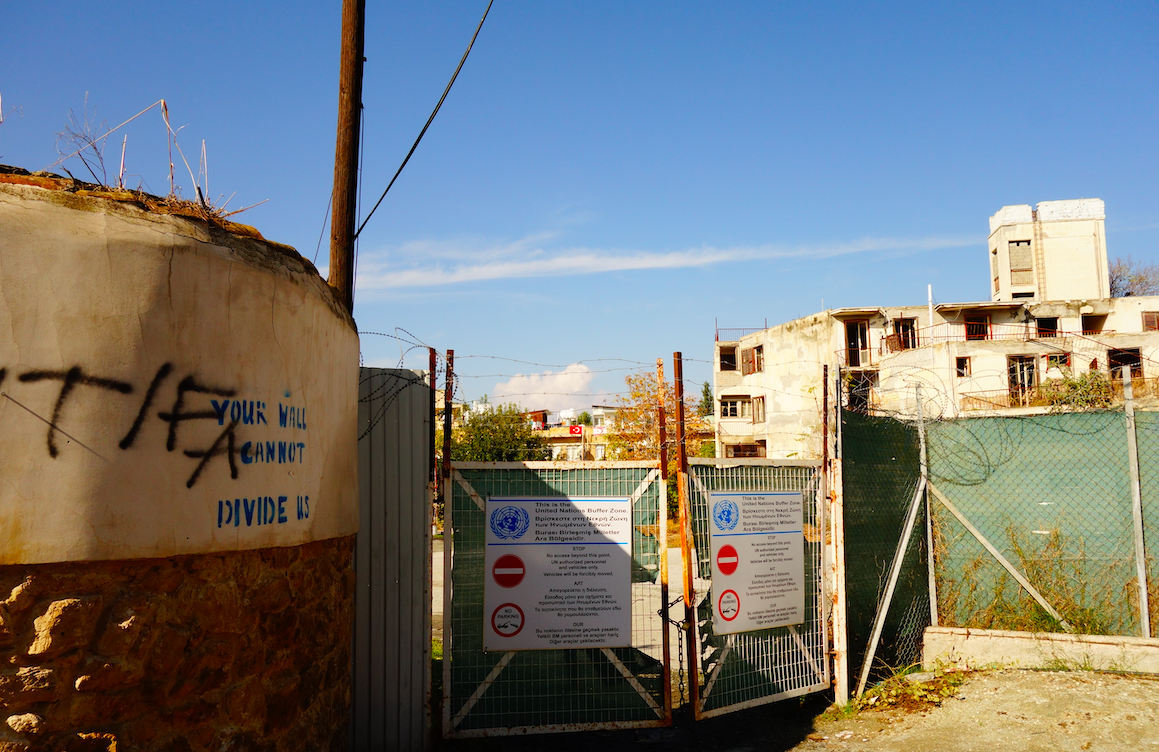
“Your wall cannot divide us” – Stenciled piece on buffer zone wall along the Green Line. (Nicosia,November 2020)

“Your wall cannot divide us” – Stenciled piece along the Green Line at Pafos Gate. (Nicosia, November 2020)
The ancient walls of Nicosia speak loudly and clearly at the first sight, and this brief visual (and virtual) trip aims to capture the different voices claiming free space to express themselves and to be heard bypedestrians. The old center of Nicosia is delimited by the fortified Venetian walls and is cut by the Green Line, evident trait of the last divided European capital. The physical boundaries of the Green Line are buffer zone decaying walls, colored barrels, barbed wire and sandbags, often marked by stencils, tags, writing carrying different socio-political messages and common universal symbols like the peace sign, white doves, gender signs, the Communist hammer and sickle, the Anarchist letter, and even swastikas.
 “Teach Peace” – Stenciled piece at the entrance of a school. (Nicosia,December 2020)
“Teach Peace” – Stenciled piece at the entrance of a school. (Nicosia,December 2020)
 “Barış” means peace in Turkish – Stenciled piece at the entrance of a school. (Nicosia,December 2020)
“Barış” means peace in Turkish – Stenciled piece at the entrance of a school. (Nicosia,December 2020)
 White dove with barbed wire – Stenciled piece. Piece by local street artist CRS. (Nicosia,November 2020)
White dove with barbed wire – Stenciled piece. Piece by local street artist CRS. (Nicosia,November 2020)
Exploring the public spaces in the southern Greek Cypriot part of old Nicosia, I perceived various voicesclaiming their right of expression and conveying different messages, but I also observed street art commissioned masterpieces adding creativity and colors to a spectral and atypical atmosphere for a European capital.
 The island of Cyprus dealing with contemporary migration flows – Street art piece by local artists CRSand Eiva. (Nicosia, November 2020)
The island of Cyprus dealing with contemporary migration flows – Street art piece by local artists CRSand Eiva. (Nicosia, November 2020)

Media bombardment – Stenciled piece by artist Blind. (Nicosia,December 2020)
Although the messages embedded in the street art pieces are open to several interpretations, I believe they are extremely powerful tools to communicate and reach a wider international public (given the fact that English is commonly used here, also for street art messages). It’s easy to notice many references to theconflict and the division still affecting Nicosia since 1974. However, it’s possible to enjoy also pieces related to other topics like local popular culture, refugees and migrant workers’rights.
Discovering Nicosia through the eye-catching outdoor art has been a unique experience and allowed me to open a window on the Cypriot society.
 Traditional old men playing backgammon – Street art piece made by Duckman Design with stencil and posters from an activism campaign that aimed to use the singers as a way to unify the people of the island. (Nicosia, January 2020)
Traditional old men playing backgammon – Street art piece made by Duckman Design with stencil and posters from an activism campaign that aimed to use the singers as a way to unify the people of the island. (Nicosia, January 2020)
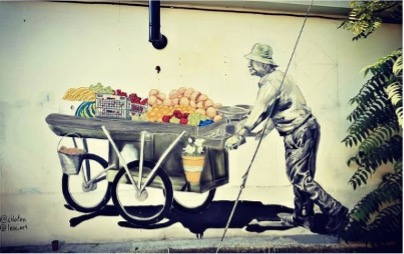 Local street vendor with a cart full of fruits and vegetables – Street art piece by Chloifinn and Leoc.art. (Nicosia, December 2020)
Local street vendor with a cart full of fruits and vegetables – Street art piece by Chloifinn and Leoc.art. (Nicosia, December 2020)

Separated couple representing the division of Cyprus – Street art piece by local artist CRS. (Nicosia, December 2020)

Migrant during the pandemic – Stenciled piece by artist Eiva. (Nicosia – January 2020)
References:
https://cyprus-mail.com/2019/06/18/islands-best-known-street-artists-leaves-behind-graffiti-gypsy/
www.futurelearn.com/info/courses/art-crime/0/steps/11888
https://theculturetrip.com/europe/cyprus/articles/a-street-art-tour-of-old-nicosia/

